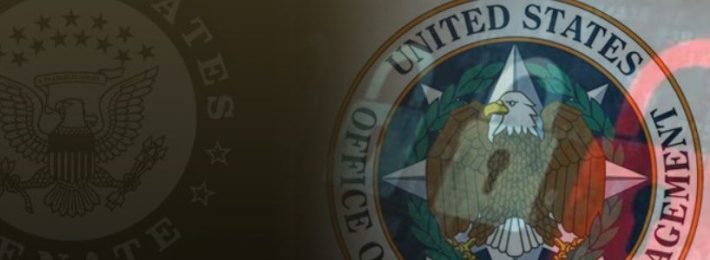The Security Clearance Applicant Loses in the DSS vs. NBIB Debate

The congressional push for a return to the “old days” when the Defense Security Service conducted all of the background investigations for the DoD prompted various news outlets (Federal News Radio, FedSmith, Government Executive) to weigh in. Even the Office of Personnel Management (parent of NBIB), which remained out of the fray for much of the debate, finally flexed its political muscle, largely due to the prospect of losing 75% of its current revenue were DSS to take over the background investigation process.
The DoD submitted a transition plan to the House Armed Services Committee in response to the 2017 NDAA signed by the President. OPM conducted their own study of DoD’s plan and contends it is not realistic and would duplicate government efforts and tax personnel and financial resources without really reducing the backlog or wait times. The DoD countered OPM’s assessment and contends that their three-phased approach would enable them to make a significant dent into the current backlog within the first 12 months while at the same time, develop their own investigative capabilities and processes and take over full responsibility from the NBIB within 36 months.
Private industry has weighed in with their opposition to the proposed changes put forth in the 2017 NDAA, arguing that “transferring responsibilities to DSS would create a parallel process that would drain resources, cause further delays, hinder process improvements, and undermine reciprocity efforts across the government”.
Memories appear to be hazy, as it was just more than a decade ago that the shift of investigations to OPM occurred for exactly the same reasons cited for the current proposal. One thing I think we can all agree on is this: until Congress, DoD, and OPM all get on the same sheet of music the clearance process will not get better and potential job applicants will continue to find jobs elsewhere. Ultimately, it is the security clearance applicant who draws the short end of the stick here.



The next few years ought to be a big cluster-f as they transition employees/duties.
The backlog is going to get worse before it gets better.
Wow . . . Really? The agencies who have allowed the backlog and other problems to grow are backing the status quo?
That’s really surprising . . . No . . . Wait . . . the other thing . . .
2015: “It always gets worse before it gets better”
2016: “We’re at around 500k cases, but uh, things are always worse before they get better”
2017 3rd quarter: “We are at 700k cases, pretty good compared to last quarter!”
2018: “This isn’t going to go as smoothly as we thought, huh?”
On a serious note, I’d like to imagine the transition for fed employees will be an administrative mess, but not too bad. Not even concerned about the contractors’ transition, though interested to see retention rates (the big elephant in the room no one talks about) for a DSS operation
History repeating itself once more.
From what I hear from feds the transition from to OPM was smooth as pie. Wondering how it’s gonna work now because NBIB needs to retain a workforce for non DOD work. The feds have been hiring like crazy in the past year.
In a bit of bitter irony, new Secret clearances seem to have gotten back down to the 3-6 month time frame, based on limited anecdotal evidence. Folks caught in the backlog are still lingering but at least new applications are being processed in a more reasonable amount of time.
And don’t forget, if DSS (or some newly minted DoD agency) does take over the DoD piece of investigations, then they will need to set up all those field offices and resident offices and regional offices and district headquarters etc etc etc. So that’s a lot of time energy and effort (not to mention expense) that will not directly address the massive backlog. Might even slow down those new investigations.
NBIB is the only a agency responsible for clearing the backlog. At some point DSS is supposed to take over new cases, but DSS won’t go within 10 feet of that backlog which is sitting at approximately 800,000 cases. Still and all, federal employees are much more expensive to the government than awarding the “pay for production” contracts. I’m very curious to know how federal employees will fit into the puzzle after all the chips have fallen.
Wow that is very interesting. So DSS will get to look like a rock star while NBIB continues to struggle!
I suppose there are still some investigators with NBIB who started out with DIS/DSS, wonder if they will be offered a chance to jump back. Also, I do not recall DSS using many contract investigators; that was a legacy OPM thing. I think they will have to bring on contractors because you know how long it takes to hire feds.
Good luck retaining quality people. Because no one likes to stay around long enough. DOD or not, it’s a problem.
"As the backlog has grown, NBIB has taken steps to increase its capacity
to conduct background investigations by increasing its own investigator
staff as well as awarding new contracts, effective in December 2016, to
four contractors for investigation fieldwork services. NBIB officials said
that NBIB has a goal to increase its total number of investigators—federal
employees and contractors—to about 7,200 by the end of fiscal year
2017. Specifically, to help address the backlog, NBIB officials reported
that NBIB increased its authorized federal investigator workforce by
adding 400 federal investigator positions in fiscal year 2016 and 200
positions in fiscal year 2017—an increase from 1,375 to 1,975 authorized
positions.123 As of July 2017, NBIB had filled 1,620 of the 1,975 positions,
and 1,513 of its federal investigators were fully trained. NBIB officials
explained that they do not plan to increase the federal investigator
capacity beyond the currently approved 1,975 because they do not have
the ability to absorb more staff. According to the officials, new
investigators must be trained by experienced investigators which reduces
the amount of time the experienced investigators have to conduct
investigative work. When estimating federal investigator capacity, NBIB
assumes it will have 277 full-time equivalent vacancies at any given time
due to high attrition rates. Further, NBIB officials could not project the
federal investigator workforce past April 2018 due to high attrition rates.
Given challenges with increasing its federal investigative staff, NBIB
continues to rely on contractors to conduct the majority of investigations.
NBIB officials noted that contractors perform about 60 percent of NBIB’s
total investigative cases. OPM awarded four new investigative fieldwork
services contracts that became effective in December 2016—two to
incumbent contractors and two to new vendors. In July 2017, OPM
officials told us that the contractor and federal staff capacity they currently
possess enables them to complete a sufficient number of investigations to
prevent the number of pending investigations from increasing further.
However, they acknowledged that the four contracts and federal
investigator staff do not currently provide OPM enough capacity to reduce
the pending number of investigations to the “healthy” inventory level of
180,000 cases.
NBIB officials have conducted analyses to determine how changes in the
total number of investigators could affect the backlog over time,
accounting for current and projected investigator capacity, prior time
studies, historical data, geographic location, and other factors.
Specifically, NBIB officials assessed four scenarios, from the status quo—
assuming no additional contractor or federal investigator hires—to an
aggressive contractor staffing plan beyond January 2018, but in July 2017
they determined that the aggressive plan was not feasible. The two
scenarios that NBIB identified as most feasible would not result in a
“healthy” inventory level until fiscal year 2022 at the earliest. For example,
under one scenario, each contractor would increase investigator capacity
under current staffing projections through early 2018. Assuming that the
contractors adhere to these projections, NBIB would have the capacity to
address incoming cases and begin to reduce the backlog, but the backlog
would not reach a “healthy” inventory level until sometime after fiscal year
2022. However, NBIB leadership has not determined whether the costs
and benefits of any one scenario are preferable to the costs and benefits
of the others.
I’d like to see contractor numbers and strategies.
I’d also like to know what they consider to be “high attrition.” 10%? 20%? What is ‘normal’ attrition?
loss - 277
force level - 1975
277/1975 = approximately 14%.
That is using the numbers listed in the article.